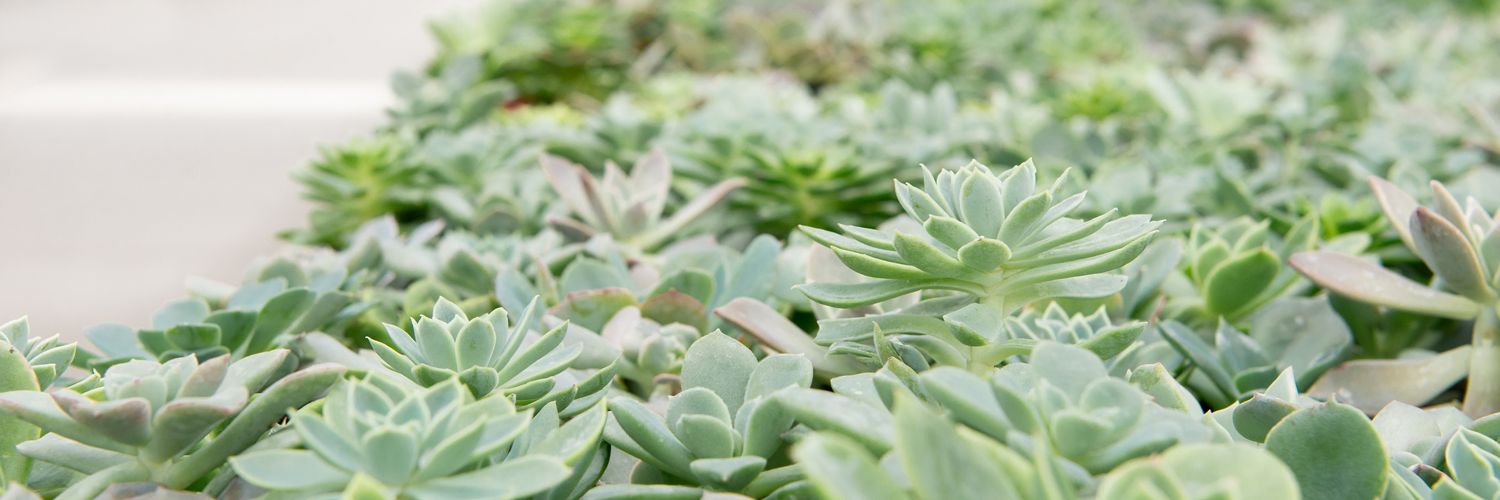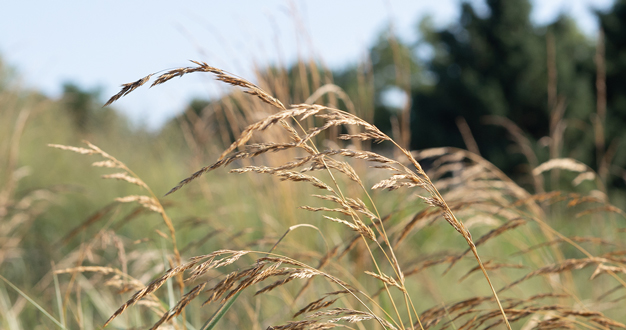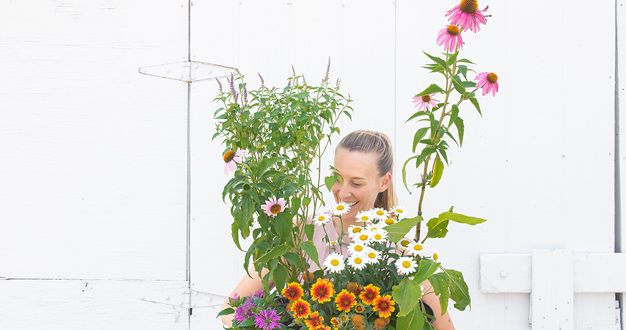
It’s hard to find a succulent that isn’t captivating, but few are as beloved as those from that varied genus Echeveria. If you have a few succulents in your collection, chances are there’s an echeveria in the group – their easy-care personalities make them a perfect choice for new plant parents. But their array of colors, textures, and fascinating shapes keep experienced collectors coming back for more too. Here, we take a closer look at these charming little plants and share a little about why they’re the favorite of so many plant enthusiasts.
Roots in the Western Hemisphere
The genus Echeveria consists of about one hundred fifty species native to areas of Mexico, Central America, and South America. The genus belongs to the plant family Crassulaceae, which also includes the popular succulent genera Crassula, Sedum, Sempervivum, and Kalanchoe. Echeveria – the genus name is used as the common name too – thrive in high elevation habitats where the climate is dry, the soil is rocky, and the days are sunny but not terribly hot.

A Mesmerizing Plant
If you’ve ever lost entire minutes of your life gazing down into an echeveria’s mesmerizing, symmetrical rosette, you’re not alone. It’s one of this succulent’s best qualities. Besides this satisfying symmetry, echeveria feature an array of lovely colors too – from bluish gray to gray-green, dark purple to red, coral, silver, and almost black. The leaves emerge from a central point, creating that perfect rosette shape. They can be flat or club-like, narrow or round, smooth on the ends, pointed, or ruffled too. Echeveria can look like a rose, a head of lettuce, or even an underwater coral. And their texture might be waxy, smooth, or even fuzzy. Bottom line is, once you fall for echeveria, the possibilities for your collection are endless.
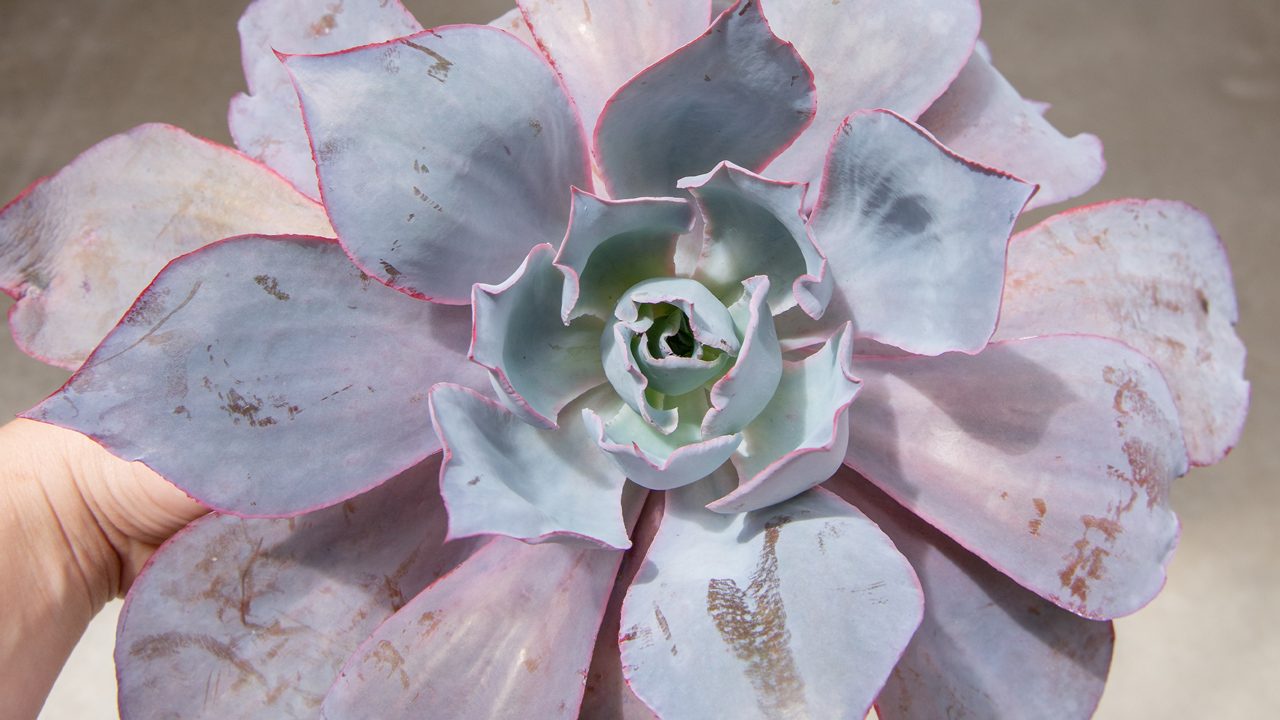
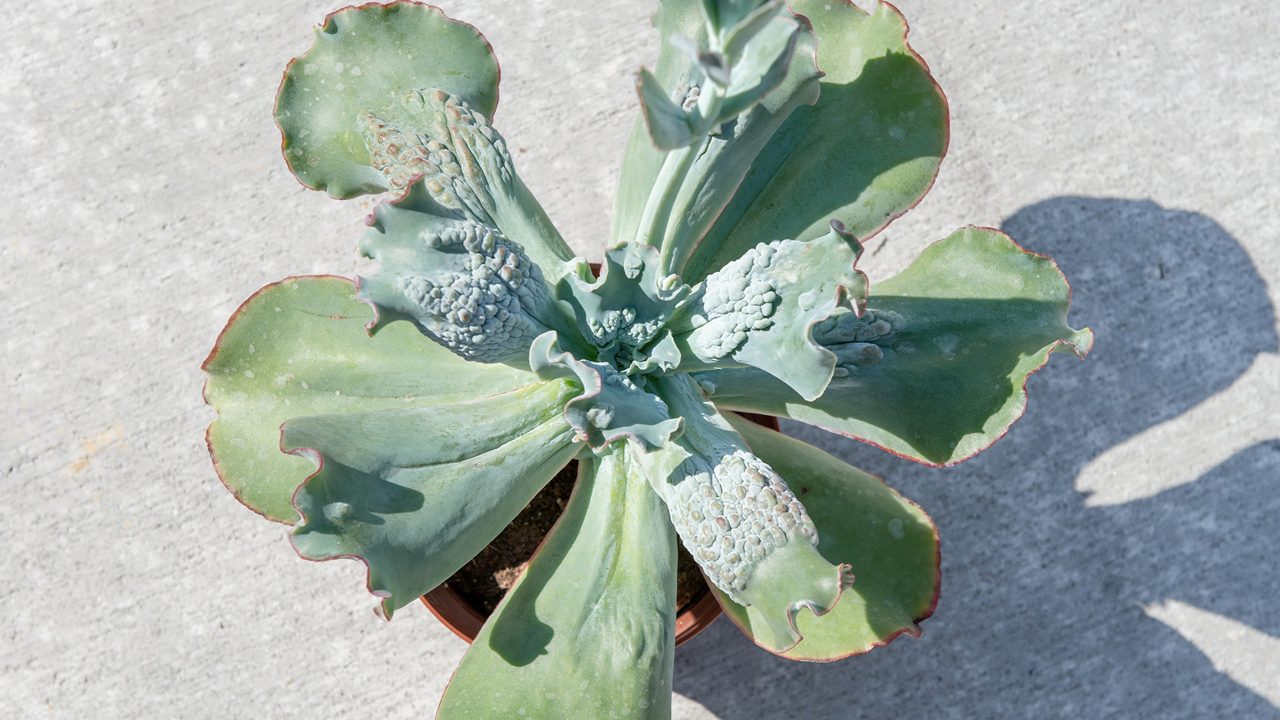
Famously Glaucous
Many echeveria share another intriguing characteristic – a sort of neon pastel glow that gives them an almost ethereal quality. This appearance is created by something called epicuticular wax, or the farina – a translucent powdery coating on the foliage, stems, and flowers. If this farina looks familiar, it’s because you’ve seen it on some of your favorite fruits including plums, blueberries, and grapes, and it’s also common in succulents like echeveria. The farina is made up of microscopic crystals that form on the cuticle of the plant and protect it from intense sun, disease, and insect bites. Plants and fruit that have farina are described as “glaucous” which refers to the powdery, bluish-silver film that can be rubbed off with just a touch. Being glaucous is different than being fuzzy because fuzz doesn’t come off so easily.
As beautiful as it is, the farina is rather delicate, and it’s best to be careful with an echeveria to keep from rubbing it off. Avoid touching the foliage with your fingers because the oils in your skin can take it away – as can some pesticides, especially horticultural oil. Damaged farina will sometimes grow back, depending on the species, but it usually won’t regain its original beauty. So be as gentle as possible when transplanting or moving your echeveria.
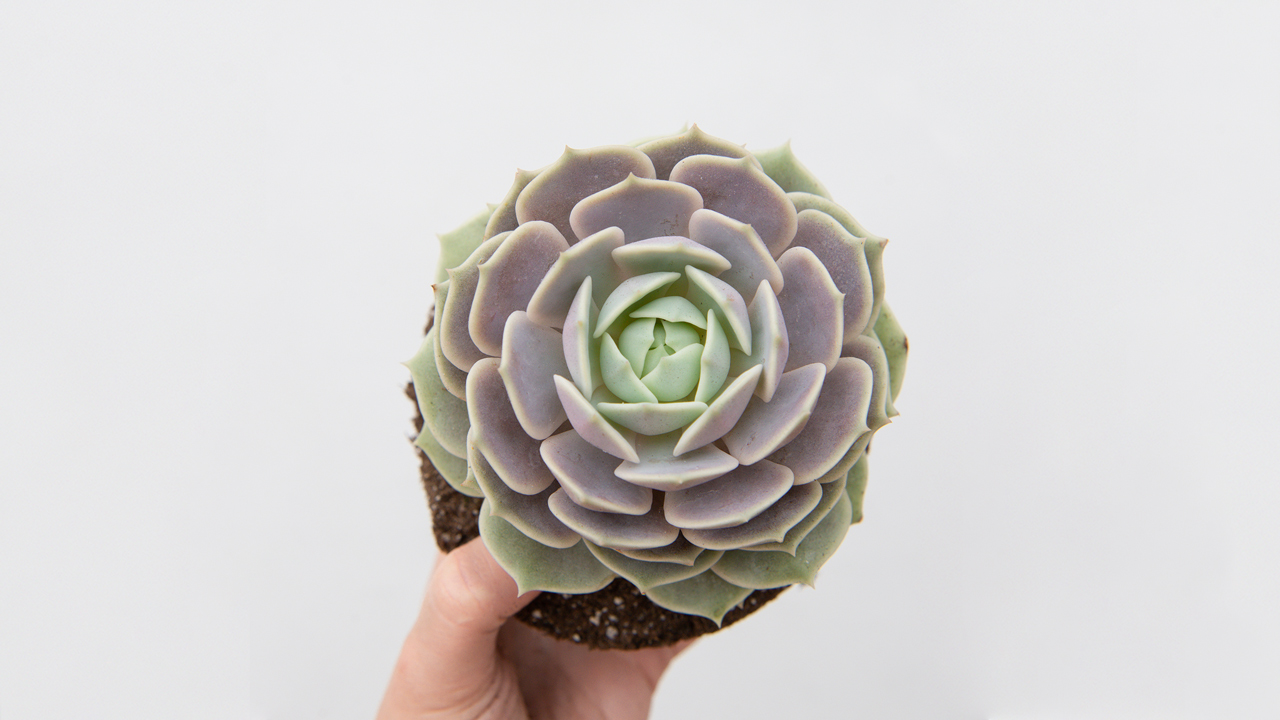
Beautiful + Easy-Care Too
For all their intriguing good looks and rich variety, echeveria aren’t at all hard to care for. Like many other succulents, they need a quick-draining potting mix that’s allowed to get dry a few inches down before the next thorough watering. Ideally, the pot should have a good drain hole. If it doesn’t, watch for signs that the plant is actually thirsty – like a little puckering in the foliage – before watering carefully. Indoors, set your echeveria in a spot that gets lots of bright – even direct – light.
Succulents like echeveria aren’t big feeders, but during the growing season, they appreciate a little fertilizer now and then. Look for a fertilizer that’s specially formulated for cacti and succulents, and follow the label directions carefully. You can use a general plant fertilizer too, but be sure to dilute it by half or a quarter first. And hold back on the feeding once fall arrives.
For insect pests, remember that succulents can be a little sensitive to harsh chemicals – and that pretty farina will disappear with many pesticides, which are often oil-based. Insecticidal soap is a safe option, but if there are only a few bugs to worry about, just dabbing them with a cotton swab dipped in diluted rubbing alcohol should do the trick.

All the Echeverias
It’s no wonder echeverias are so popular with plant people. They’re beautiful, easy to care for, and addictively collectible too. Next time you visit the Greenhouse, see how many echeveria you can spot in our collection – there’s quite a few, and maybe some you haven’t noticed before. And if you have questions, just grab one of us. We’re happy to help with anything you need.

